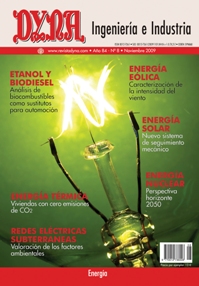ENERGY EFFICIENCY FACTORS TO CONSIDER IN ELECTRICAL GRIDS CALCULATION.
Keywords:
Emisiones de CO2, distribución de energía eléctrica, generación de energía eléctrica, red subtérranea, pérdidas Joule, Protocolo de Kyoto.Abstract
Traditionally, the design of the primary underground circuits for electrical distribution has been based on technical exploitation criteria, as load capacity, reliability, service quality, losses, and economical concerns as installation cost, being so achieved a compromise which minimizes the investment cost on the basis of optimizing the cable section. This procedure maintains its validity from the technical point of view but, nowadays, a new environmental and economical concern should be taken in account in order to determinate the optimum section of an underground cable. This new factor is just the emission of greenhouse effect gasses, as CO2, consequence of the primary source of energy used in the electrical energy production. The ecological impact of these emissions is being increasing its relevance as increases the social conscience on environmental concerns, in particular, since the signature of the Kyoto greement. In this work, we present a designing method which considers the part of generation of energy necessary to cover the losses in the underground distribution lines, and includes the cost of the CO2 emissions in the computation of the optimum section of the cable. It is concluded that by increasing the section, not necessary from the viewpoint of classical design lines, leading to a reduction of emissions and Joule losses, which allows a rapid recovery of investment through energy savings achieved with reducing losses. The investment excess could be paid back quickly by avoiding administrative fines and by selling the corresponding emission rights.Downloads
Published
2009-10-30
Issue
Section
ARTICULOS

